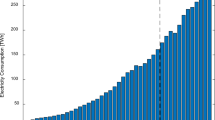Abstract
Recent developments in machine learning for anomaly detection make it possible to use spacecraft status telemetry to produce sophisticated system health monitoring applications, that can run autonomously on-board. Both archived and simulated data are used to train intelligent algorithms to automatically detect and classify anomalous time series of the produced telemetry. The focus of this work is the application of a Support Vector Machine (SVM) based classifier to monitor the status of an interplanetary probe photovoltaic system with a minimum set of available measurements. SVM is a popular machine learning method for classification and regression and it has outstanding generalization performance. The Rosetta lander Philae is considered as test case. A complete model of power production subsystem has been developed to simulate the real telemetry. Training data, generated for nominal and faulty cases, are used to train the SVM model, with the goal of classifying permanent and temporary power loss conditions. The simulated telemetry is then used to test its performance and to identify the minimum number of measurements that is necessary for a successful classification of the failures of interest.
Similar content being viewed by others
References
Y. Gao, T. Yang, N. Xing, M. Xu, Fault detection and diagnosis for spacecraft using principal component analysis and support vector machines, 7th IEEE Conference on Industrial Electronics and Applications (ICIEA), pp. 1984–1988, (2012)
Y. Zhao et al., Decision tree-based fault detection and classification in solar photovoltaic arrays, 27th Annual IEEE Applied Power Electronics Conference and Exposition (APEC), pp. 93–99, (2012)
F. Topputo, F. Bernelli-Zazzera, A. Ercoli-Finzi, Power Production for Small Body Landers: Post-Launch Activities on Philae’s Power Subsystem, 62nd International Astronautical Congress, Cape Town, SA, (2011).
M. Cattafesta, Modelling and simulation of Rosetta Lander Philae solar arrays, Politecnico di Milano, Master Thesis, (2013)
G. M. Caputo, On-comet attitude determination of Rosetta lander Philae through nonlinear optimal system identification, Politecnico di Milano, Master Thesis, (2012).
G. Pinzan, Landing Site Selection for Rosetta Lander Philae through a Multidisciplinary Approach, Politecnico di Milano, Master thesis, (2012).
F. Gaspari, Numerical and experimental characterization of Philae’s photovoltaic balcony panel, Politecnico di Milano, Master Thesis, (2016).
S. Armstrong, W. G. Hurley, A thermal model for photovoltaic panels under varying atmospheric conditions, Applied Thermal Engineering, vol. 30, pp. 1488–1495, (2010)
A. D. Jones, C. P. Underwood, A thermal model for photovoltaic systems, Solar Energy, vol. 70, pp. 349–359, (2001).
C.-C. Chang, C.-J. Lin, LIBSVM: A library for support vector machines, (2013).
Author information
Authors and Affiliations
Rights and permissions
About this article
Cite this article
Infantolino, G.M., Di Lizia, P., Topputo, F. et al. On-Board Telemetry Monitoring via Support Vector Machine with Application to Philae Solar Generator. Aerotec. Missili Spaz. 97, 183–188 (2018). https://doi.org/10.1007/BF03406052
Published:
Issue Date:
DOI: https://doi.org/10.1007/BF03406052




